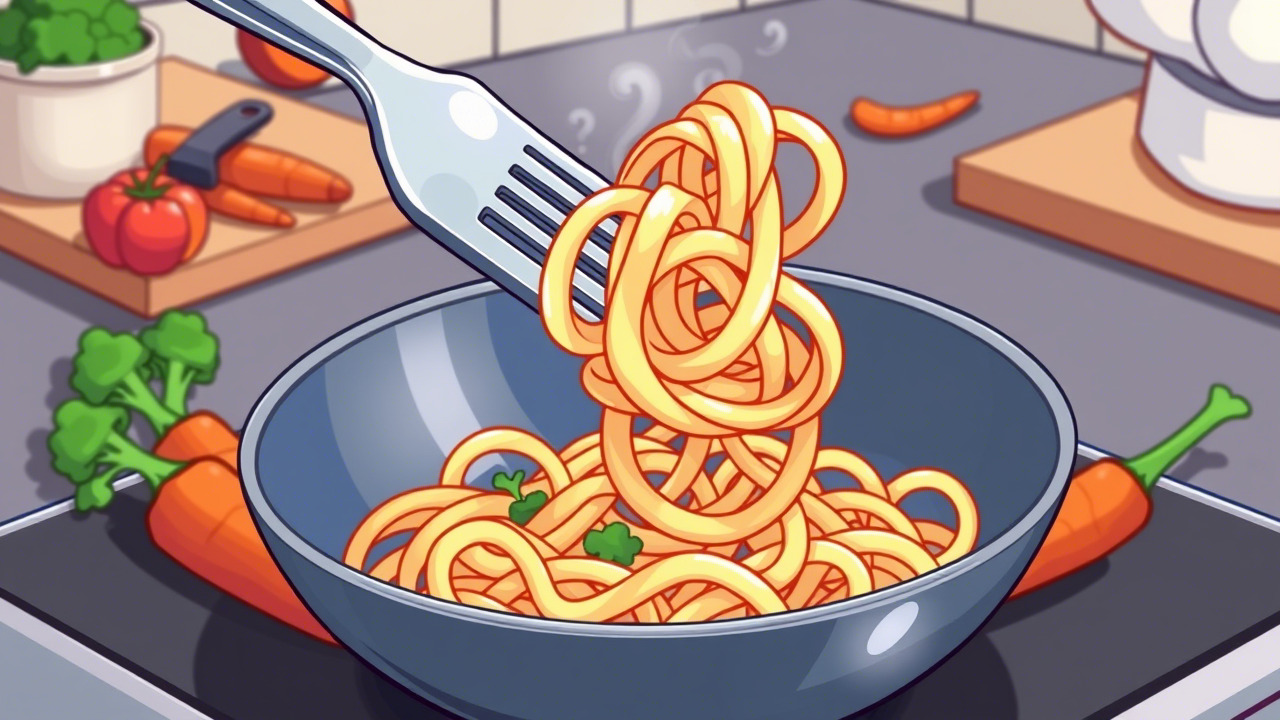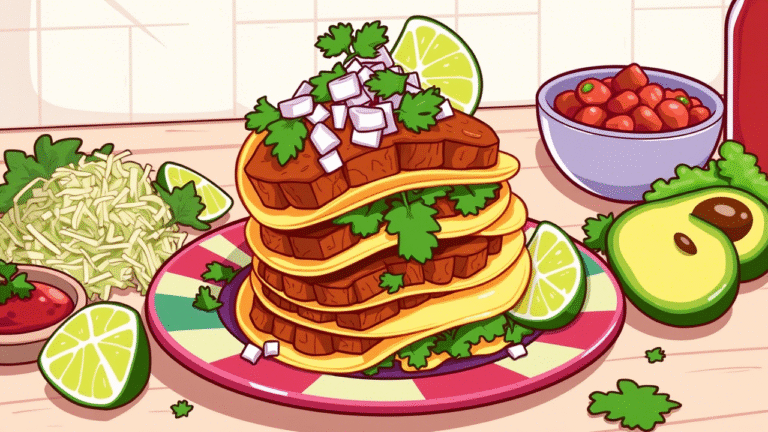Parsnip Noodles That Are Easy to Slurp
Parsnip noodles offer a low calorie, high nutrient option to regular pasta. They’re a breeze to make, and light and healthy to eat, with plenty of fiber and vitamins.
In this article, I’ll tell you why parsnip noodles deserve a place on your plate. We’ll learn about the impressive nutrition stats, how to prepare them and why they are ideal for all ages.
Hang around if you’re prepared to exchange rich pasta for something lighter, but every bit as satisfying.
What Makes Parsnip Noodles So Special?
A Lighter, Healthier Pasta Swap
Pasta is amazing, of course, but let’s face it, it’s not exactly healthy food. For parsnip pasta, however, the noodles are simply spiralized parsnips.
In addition to being light on calories, rood veggies are brimming with fiber, vitamins like Vitamin C, and potassium.
And the best part is, they’re fun to eat. Naturally sweet, they go great with a creamy sauce so you can almost feel decadent for no reason.
Nutrition Stats That Impress
Here’s what you get in 100 grams of raw parsnips:
| Nutrient | Amount per Serving | % Daily Value (DV) |
| Calories | 75 kcal | 4% |
| Carbohydrates | 18 g | 6.5% |
| Dietary Fiber | 5 g | 18% |
| Sugars | 5 g | 10% |
| Protein | 1 g | 2% |
| Total Fat | 0 g | 0% |
| Sodium | 10 mg | 0.4% |
| Glycemic Index | 52 (low) | – |
| Vitamin C | 23–115 mg | 23–128% |
| Potassium | 587–2531 mg | 12–54% |
Nutrition: Parsnips are a nutritional powerhouse. They are high in fiber, promoting digestion, and low on the glycemic index, so they won’t spike your blood sugar.
And they’re chock-full of cell-protecting antioxidants, to boot.
Breaking Down the Nutrition Facts
Parsnips vs. Traditional Pasta
Let’s compare parsnips to cooked wheat pasta:
| Nutrient | Parsnip (raw) | Traditional Wheat Pasta (cooked) |
| Calories | 75 kcal | 131 kcal |
| Carbohydrates | 18 g | 25 g |
| Dietary Fiber | 5 g | 1.3 g |
| Protein | 1 g | 5 g |
| Total Fat | 0 g | 1.1 g |
| Sodium | 10 mg | 6 mg |
| Vitamin C | 23 mg | 0 mg |
| Glycemic Index | 52 (low) | 45–65 (varies) |
As you can tell, parsnips noodles have less calories, more fiber and loads more Vitamin C than traditional pasta.
They also contain less fat and sodium, making them heart-healthy fare.
The Power of Fiber
Parsnips contain 5 grams of fiber per 100 grams, 18 percent of your daily requirements.
Fiber encourages digestion and can help you feel full longer. It’s good for your health and your waistline.
Rich in Vitamins and Minerals
Parsnips are a powerhouse of vitamins, minerals and antioxidants for better health:
- Vitamin C: There’s between 100% and 128% of your daily needs in parsnips, which makes them an immunity-boosting rock star.
- Potassium: Up to 54% of the potassium you need each day is in each serving, for a healthy heart and strong muscles.
- Folate: Necessary for cell growth and development, particularly for women who are pregnant.
How to Make Parsnip Noodles at Home
Step-by-Step Instructions
Parsnip noodles are easier to make than you might imagine. Here’s how to do it:
- Spiralize the Parsnips: Spiralize fresh parsnips into thin, noodle-like strands. If you don’t have a spiralizer, you can julienne the beets with a knife or with a mandoline slicer.
- Cook Them Briefly: Parsnip noodles only take a few minutes to cook up—simply toss them into a pan with olive oil and cook for 2–3 minutes, just until done, or steam/boil until tender. They will turn mushy if you overcook them, so watch them.
- Sauce and Toppings: Accompany them with light sauces such as lemon-basil cashew cream, garlic shrimp, or even a basic marinara. Feel free to throw in some vegetables or protein for additional flavor and nutrients.
Serving Suggestions
Serve your parsnip noodles hot with a creamy sauce or cold in a salad.
They go particularly well with herbs such as basil, thyme and parsley, which bring out the elements of their natural sweetness.
For a more substantial dish, with grilled chicken, tofu or roasted veggies.
Why Parsnip Noodles Are Perfect for All Ages
Great for Kids
Kids love slurping noodles, and parsnip noodles are no exception to the rule.
The fact that they are slightly sweet makes them likable, and you can slip additional veggies into them by incorporating them into sauces or spreads.
Ideal for Diets
Parsnip Noodles are gluten-free, low-carb and vegan. If you’re paleo, vegetarian or keto, these noodles fit right in.
Supports Blood Sugar Balance
At 52, the glycemic index of parsnips is that it releases the energy slowly, maintains the blood sugar spike.
Which makes them a good choice for folks with diabetes or who are trying to control their carb intake.
Fun Facts About Parsnips
A Root Veggie with History
Parsnips have been farmed for centuries and are a member of the carrot family. They also taste sweeter and nuttier, particularly when roasted or cooked.
Naturally Sweet and Versatile
The sweetness of parsnips adds the perfect touch of flavor to replace starchy carbs in soups and casseroles – and you can even use parsnips in desserts.
They are firm in texture so they’re suitable for spiralization.
Family-Friendly
Even picky eaters won’t realize they’re eating a vegetable when parsnip noodles are topped with flavor bombs!
Drizzled with a little pesto or sprinkled with Parmesan, and they disappear in no time at all.
Summary Table
| Aspect | Details |
| Calories per 100g | 75 kcal |
| Fiber | 5 g (18% DV) |
| Vitamin C | 23–115 mg (23–128% DV) |
| Best For | Gluten-free, low-carb, vegan diets |
| Cooking Time | 2–3 minutes |
| Pairing Ideas | Creamy sauces, garlic shrimp, roasted veggies |
Final Thoughts
If you have never made parsnip noodles then you are missing out on a simply yummy healthy way to enjoy your pasta.
They’re light and satisfying and fiber and vitamin packed.
Try them out — you may just discover a new favorite thing to do with your vegetables.

I’m Kai, a fitness fiend and wellness geek from Vancouver. I love helping people find small, sustainable ways to feel better every day. From workouts, to good mental health, to smoothie recipes, I keep it real. Perfection is not my thing — progress is. When I’m not at the gym, I’m likely to be hiking or sampling a new meditation app







